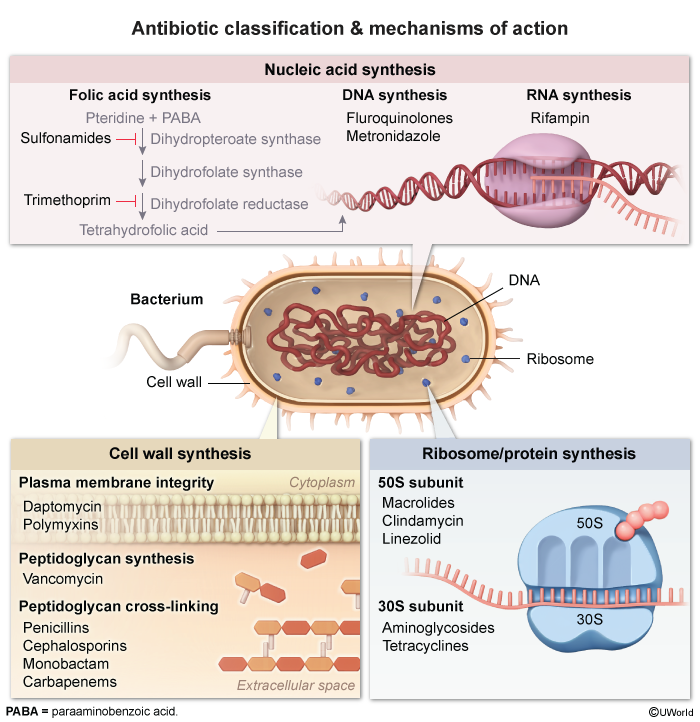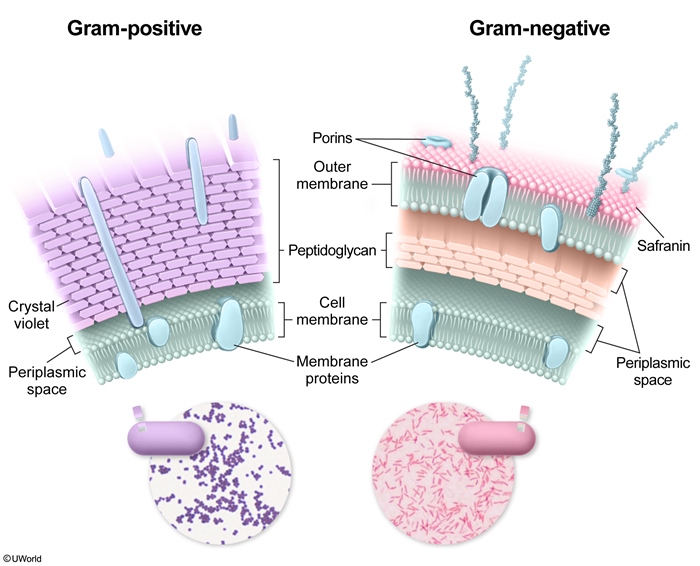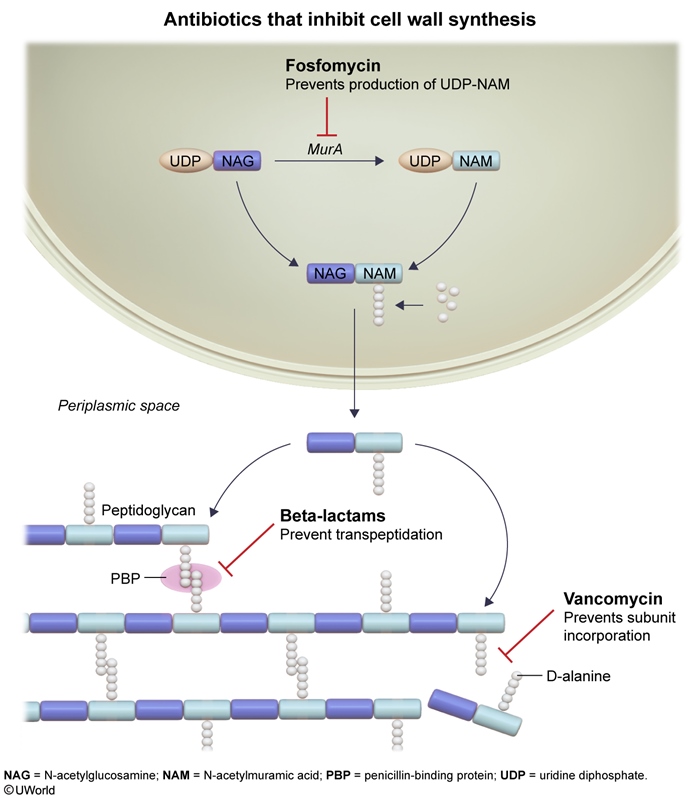Antimicrobials: Antibiotics
Article Sections
Introduction
Antibacterial antibiotics represent >100 individual drugs across a dozen classes. Many systems and tables exist for reference. The first half of this article presents each of the major classes of antibiotics, including their mechanism of action (Figure 1), spectrum, major indications, and important adverse effects. The second half provides a general framework for antibiotic selection.
β-lactam antibiotics
β-lactam antibiotics all share a common square ring (β-lactam ring); in most β-lactam antibiotic classes, this ring is fused to another ring (ie, bicyclic system). Changes to the β-lactam ring or to side chains are responsible for changes in antibiotic properties (eg, spectrum of activity).
The β-lactam antibiotics include penicillins, cephalosporins, carbapenems, and monobactams. These antibiotics reach the peptidoglycan bacterial cell wall, including by going through porins in gram-negative organisms (
Continue Learning with UWorld
Get the full Antimicrobials: Antibiotics article plus rich visuals, real-world cases, and in-depth insights from medical experts, all available through the UWorld Medical Library.
Figures





